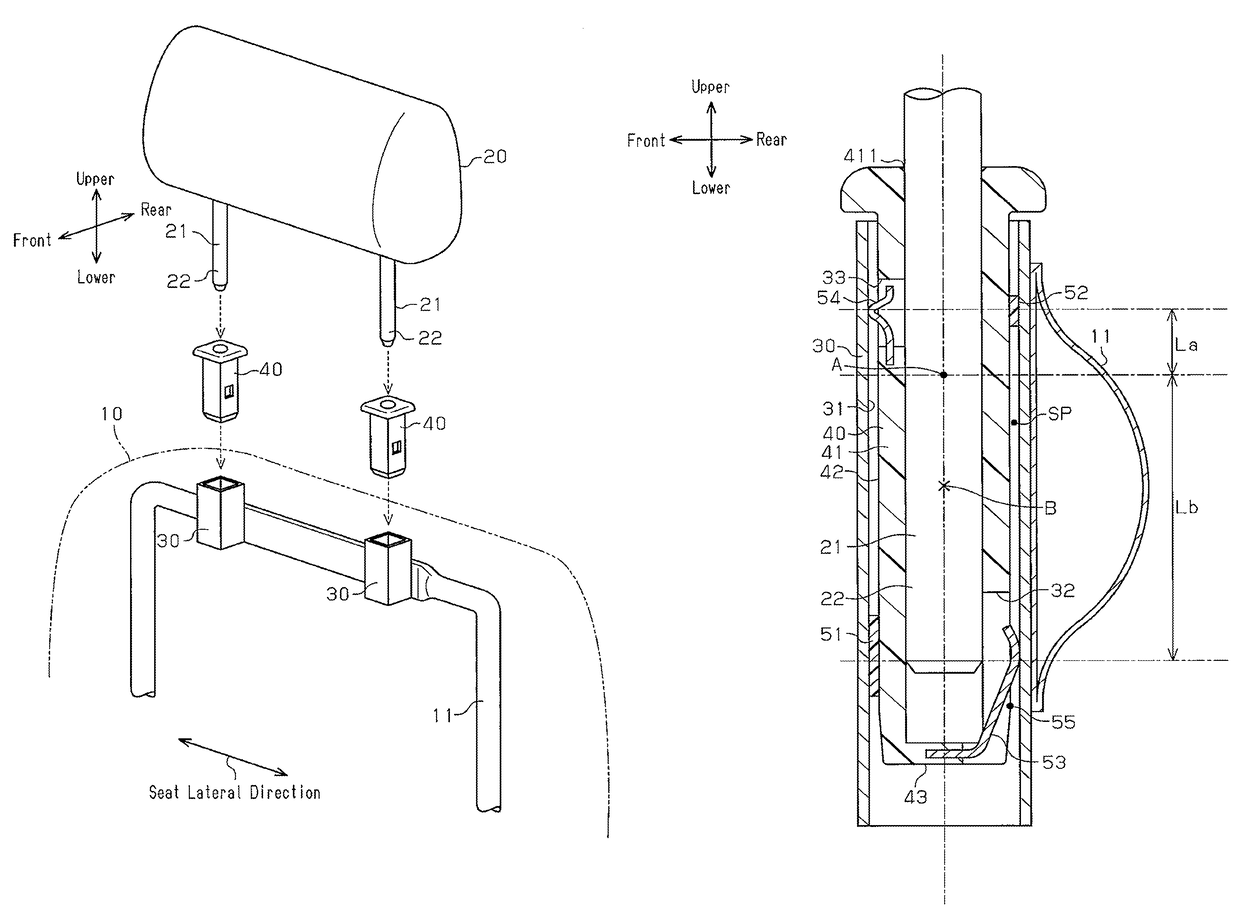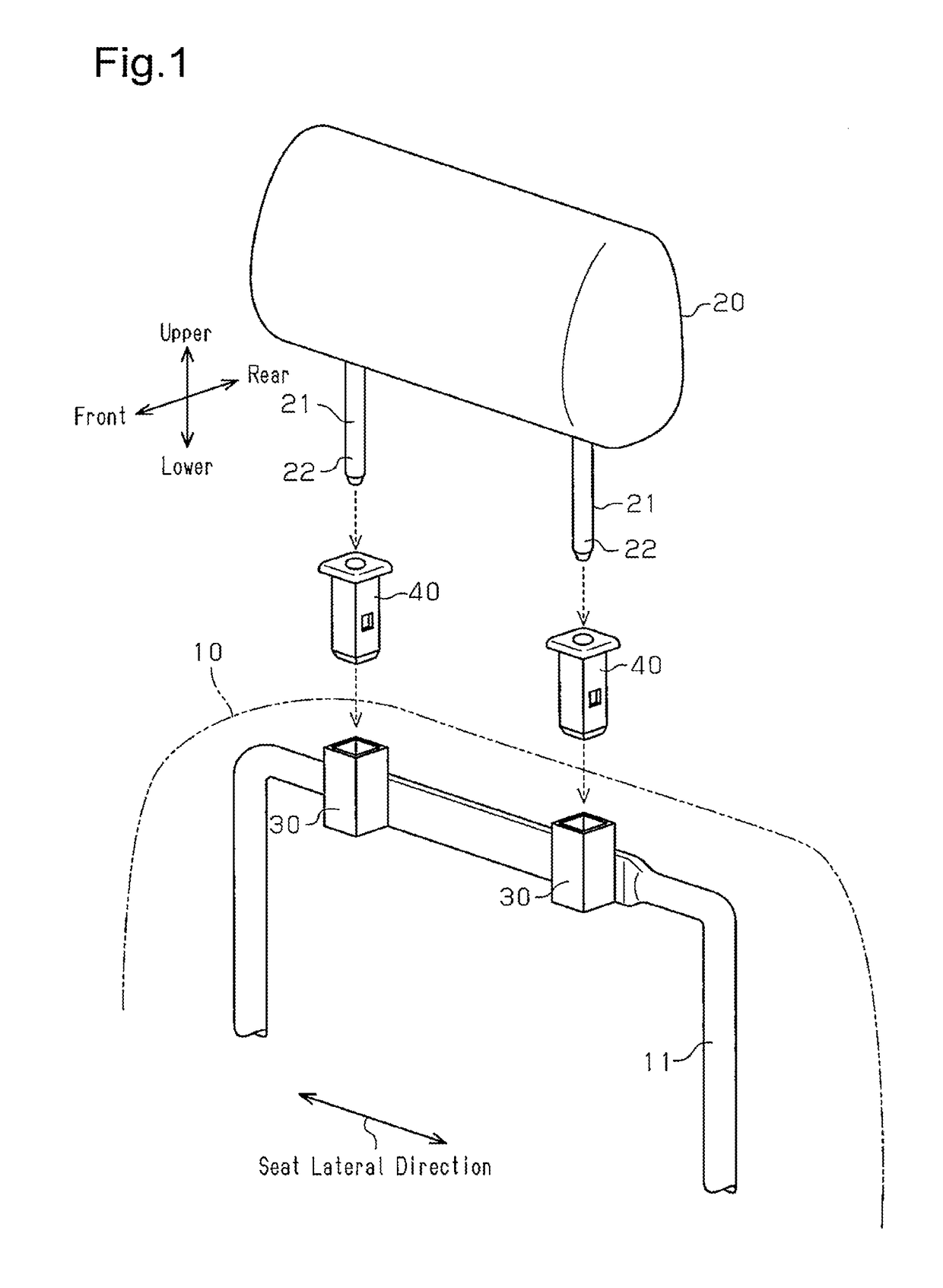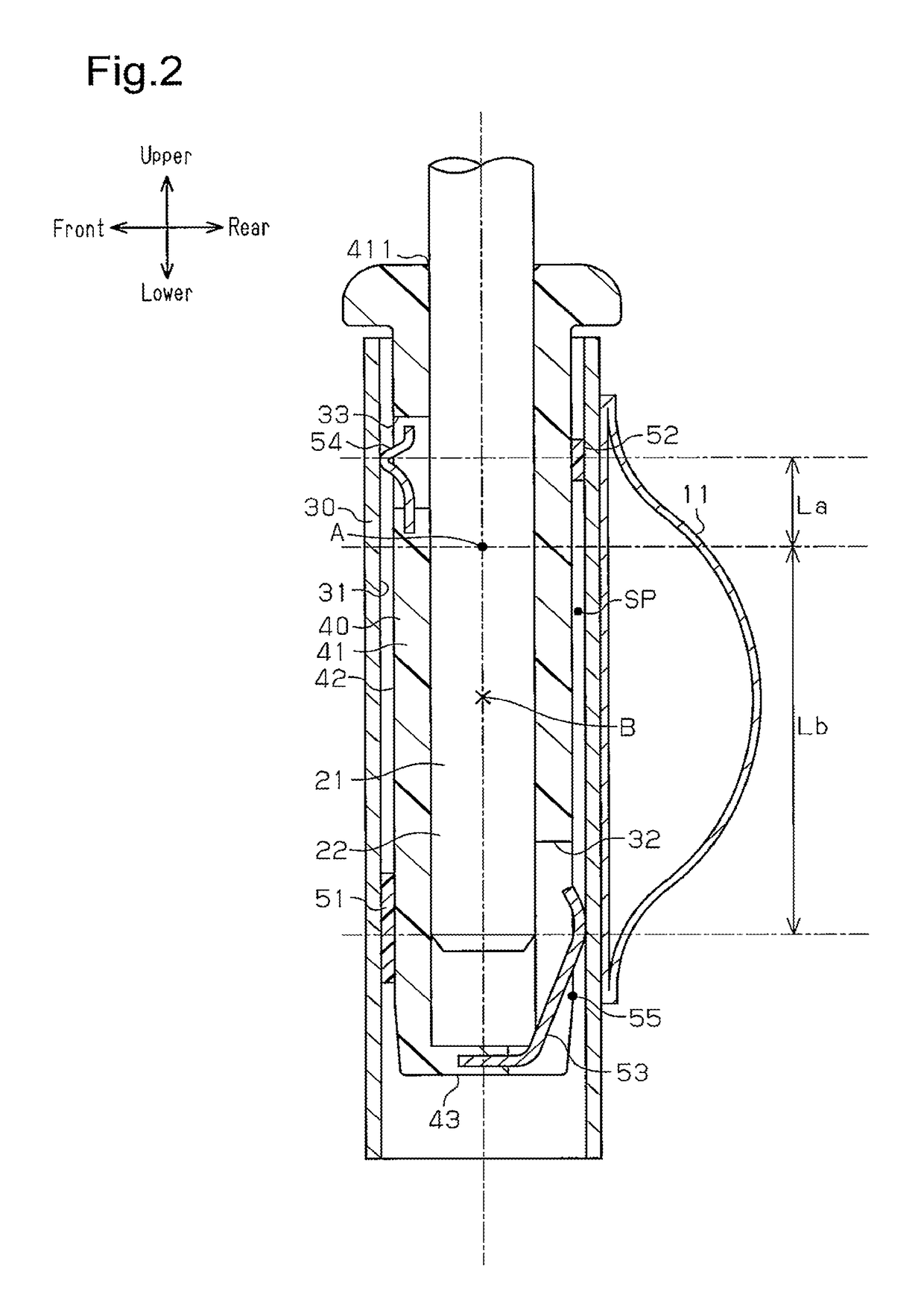Headrest supporting structure
a technology for supporting structures and headrests, which is applied to head rests, vehicle components, vehicle arrangements, etc., can solve problems such as reducing drivability, and achieve the effects of reducing the width of the tilt range, preventing the width of the pivot range from being easily changed, and increasing the tilt range of the headrest stay
- Summary
- Abstract
- Description
- Claims
- Application Information
AI Technical Summary
Benefits of technology
Problems solved by technology
Method used
Image
Examples
first embodiment
[0027]A headrest supporting structure according to a first embodiment applied to a seat installed in a vehicle will now be described with reference to FIGS. 1 to 6. In the present embodiment, the side of the headrest on which the head portion of a person seated in the seat is located is referred to as a front side, and the opposite side is referred to as a rear side. Furthermore, the direction in which the backrest and the headrest are arranged is referred to as a seat vertical direction.
[0028]FIG. 1 shows a headrest supporting structure, which elastically supports a headrest 20 on a backrest 10 of the seat. As shown in FIG. 1, the headrest 20 includes a pair of rod-like headrest stays 21. The headrest stays 21 are arranged in the lateral direction of the seat, and each headrest stay 21 has a distal end portion 22, which projects from the headrest 20 toward the backrest 10.
[0029]The headrest supporting structure includes a pair of support brackets 30, which is formed of metal into a...
second embodiment
[0055]A headrest supporting structure according to a second embodiment will now be described with reference to FIG. 7. In the following description, differences from the headrest supporting structure of the first embodiment will mainly be discussed. Like or the same reference numerals are given to those components that are like or the same as the corresponding components of the headrest supporting structure of the first embodiment, and detailed explanations are omitted.
[0056]As shown in FIG. 7, first communication windows 32A, which connect the inside and the outside of the headrest support 40, are provided on the lower rear side and the lower front side of the headrest support 40. A lower spring 53A, which is supported by the bottom wall 43 of the substantially tubular headrest support 40, has a first urging portion 531, which extends obliquely upward and rearward from the bottom wall 43, and a second urging portion 532, which extends obliquely upward and forward from the bottom wa...
PUM
 Login to View More
Login to View More Abstract
Description
Claims
Application Information
 Login to View More
Login to View More - R&D
- Intellectual Property
- Life Sciences
- Materials
- Tech Scout
- Unparalleled Data Quality
- Higher Quality Content
- 60% Fewer Hallucinations
Browse by: Latest US Patents, China's latest patents, Technical Efficacy Thesaurus, Application Domain, Technology Topic, Popular Technical Reports.
© 2025 PatSnap. All rights reserved.Legal|Privacy policy|Modern Slavery Act Transparency Statement|Sitemap|About US| Contact US: help@patsnap.com



